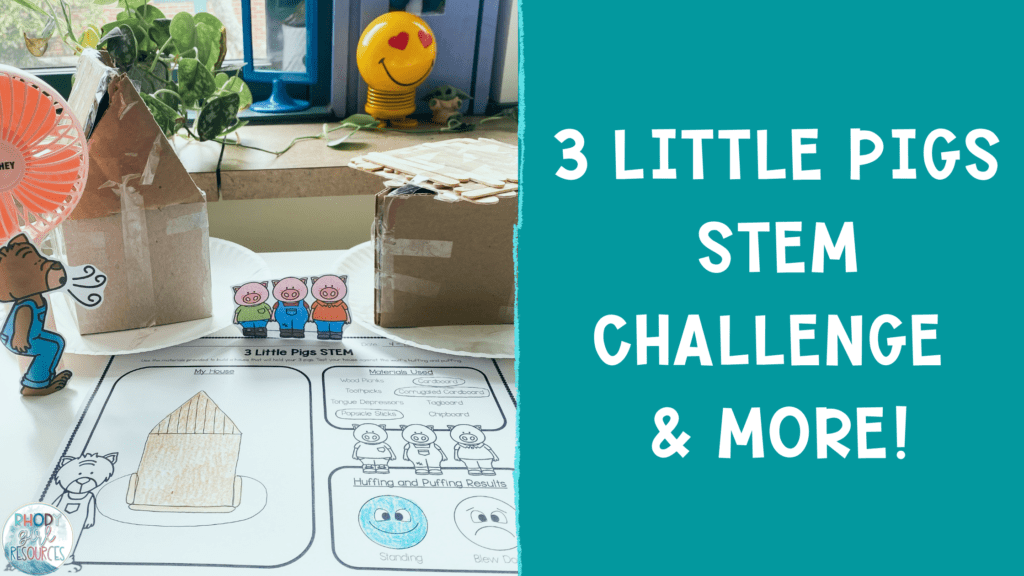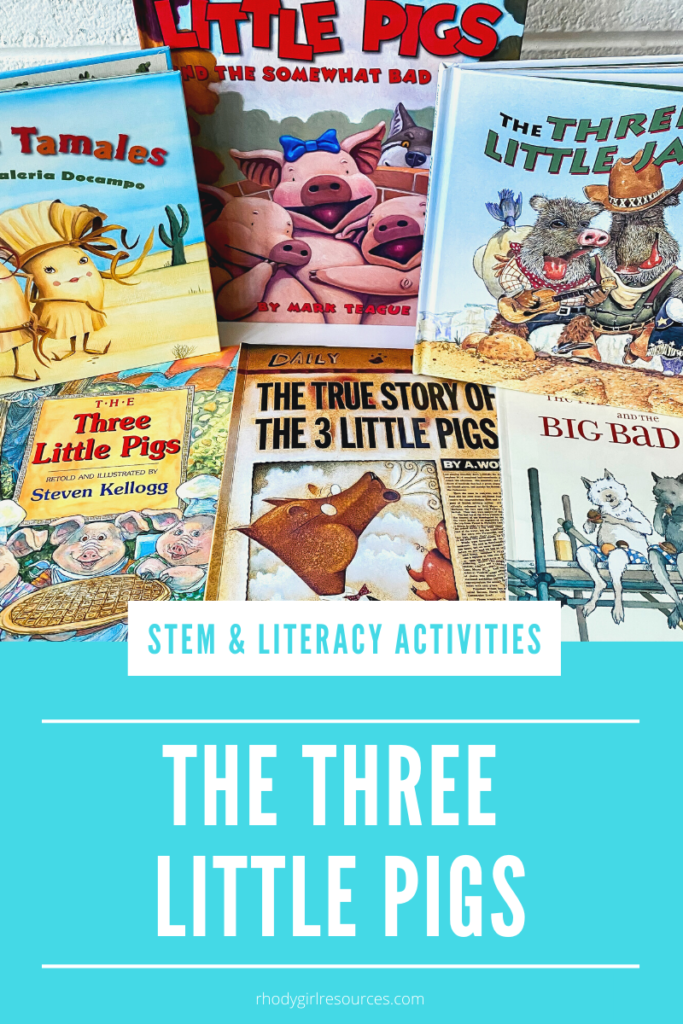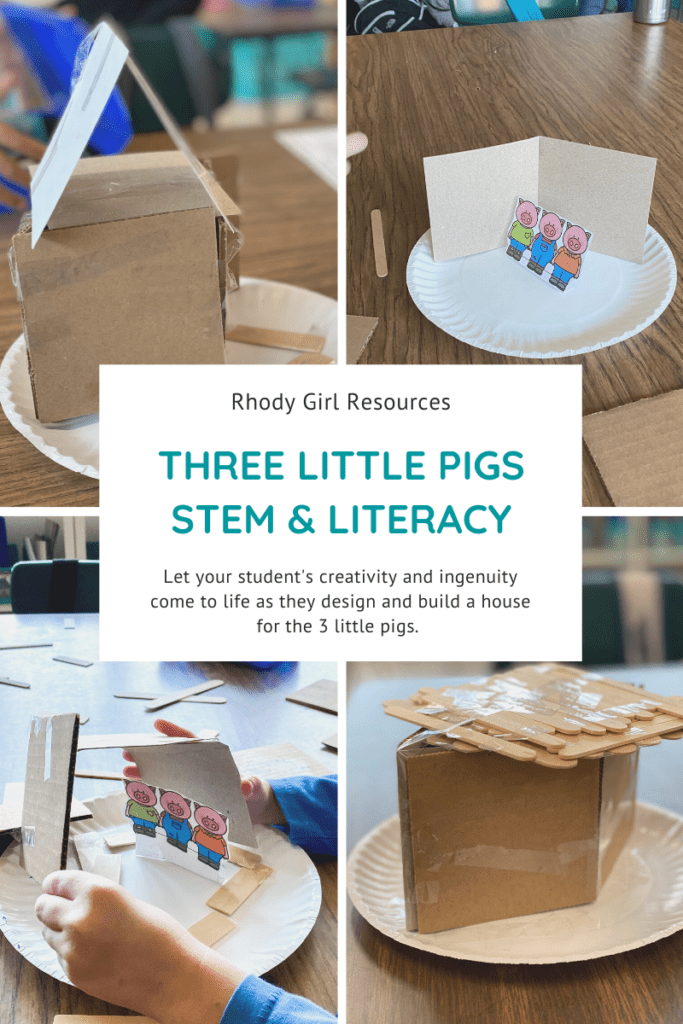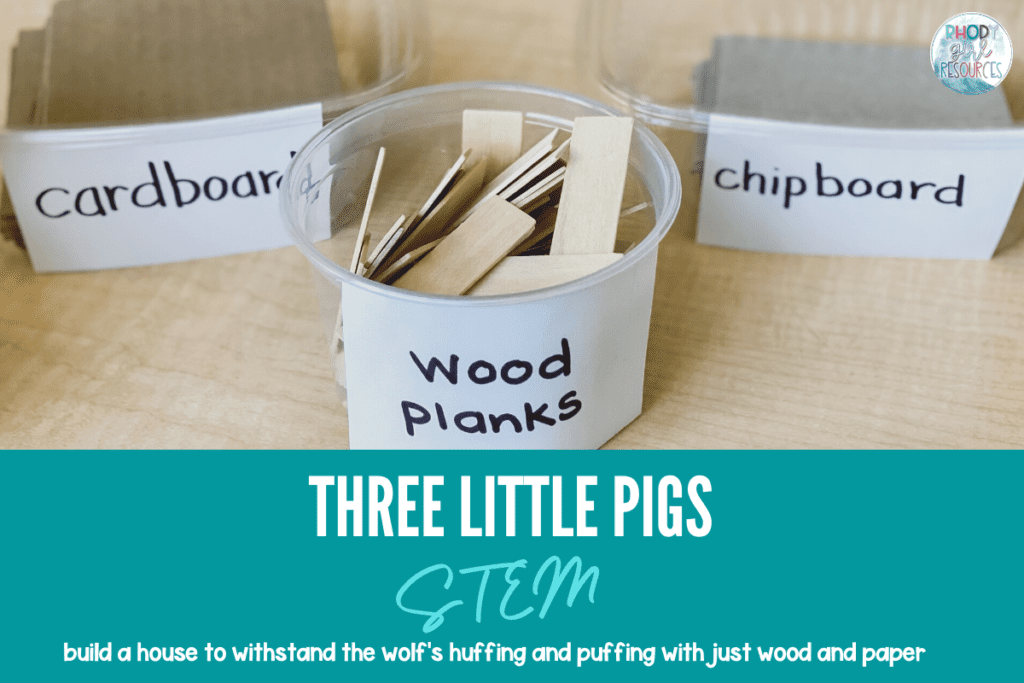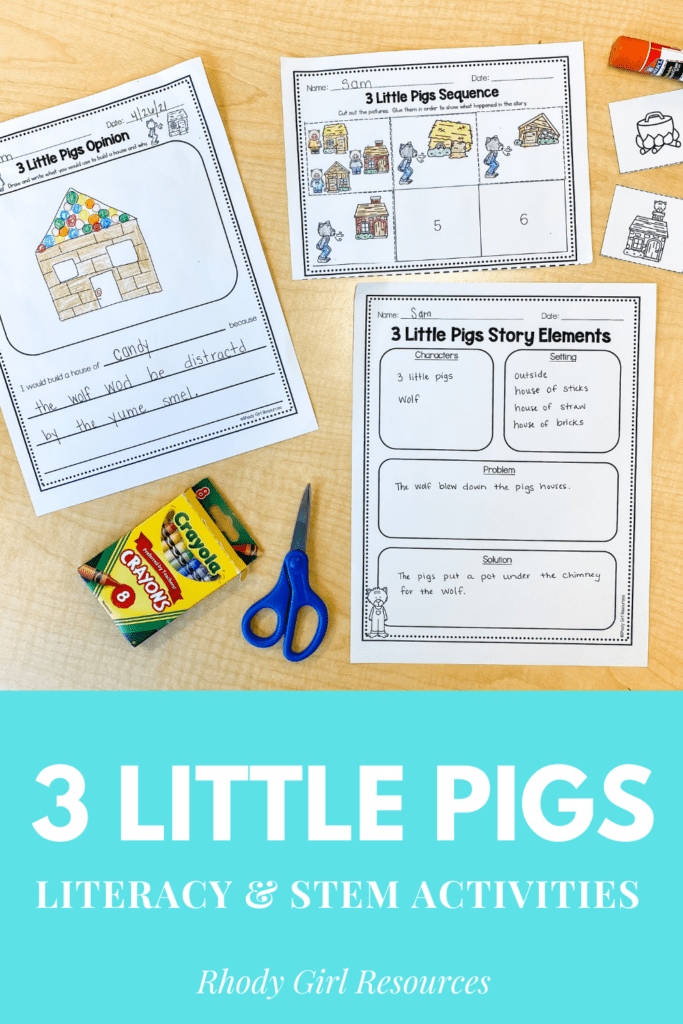Each year I read different versions of The Three Little Pigs for fun. We use these fairy tales to work on comprehension skills too but that’s about it. Until this year when the idea for the 3 Little Pigs STEM challenge was born!
I love activities that are cross-curricular. In science, we use the FOSS Kits. One of the kits teaches about types of wood and paper. During a read-aloud, I realized we could build houses just like the pigs, using wood and paper.
I wanted the 3 little pigs STEM challenge to focus on teamwork and only have a few guidelines. Firstly, I made groups of 2-3 students. Secondly, groups received a paper plate with 3 pigs attached to it. I explained that they could use any of the materials provided and as much as they wanted but the 3 pigs had to fit inside their house. Students got to browse the materials and then worked to make a plan. Once their plan was in place it was time to start building.
It is fascinating watching this process. I loved seeing the different group dynamics and how everyone had unique ideas. There were definitely disagreements and plans that fail but that is all part of the experience.
The timeline is up to you. For example, we built houses one day and tested them the next. The goal was to build a house that would remain standing against the wolf’s huffing and puffing. We used a fan as the wolf. I held the fan up to each house and students recorded the results.
Endless Possibilities
There are so many possibilities with the three little pigs STEM activity. Little changes with materials, time, and groupings can all make a difference. It really is all up to you and can change each time you do it.
3 Little Pigs STEM Materials
You don’t have to use wood and paper. In other words, you can grab anything you have available! Even better allow students to find their own materials. Here are possible things to build with.
- cardboard
- cardstock
- popsicle sticks
- toothpicks
- tongue depressors
- play dough
- candy (dots, gumdrops)
- blocks
- sticks
- straws
3 Little Pigs STEM Guidelines
I kept it really simple. You can increase difficulty with little tweaks and changes. For example, specify how many materials or how much of each material can be used. You could also set a time limit for completion of the house. Instead of a fan try testing it out with a blow dryer. Lastly, provide musts such as the house needs to have a door.
3 Little Pigs Literacy
To tie it all together we did literacy activities too. After reading The Three Little Pigs students sequenced pictures to show the events in order. Once we read two versions we used a double bubble map to compare and contrast. Subsequently, we used story maps to discuss the characters, setting, and details for each story we read.
If you want to try out any of these activities with your own students you can grab them on my site here or on Teacher Pay Teachers here. You can also check out this freebie to help integrate The 3 Little Pigs into your write-the-room activities!
